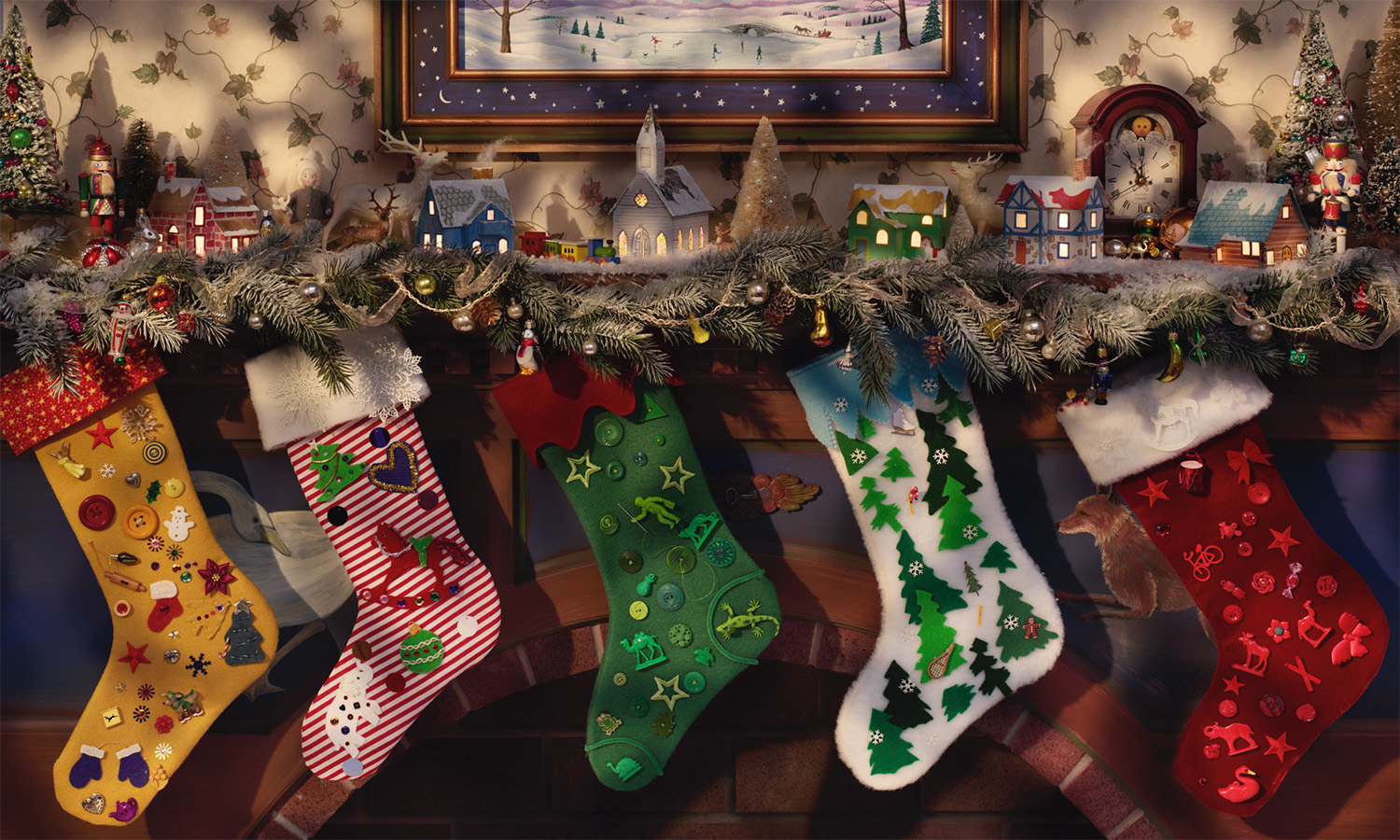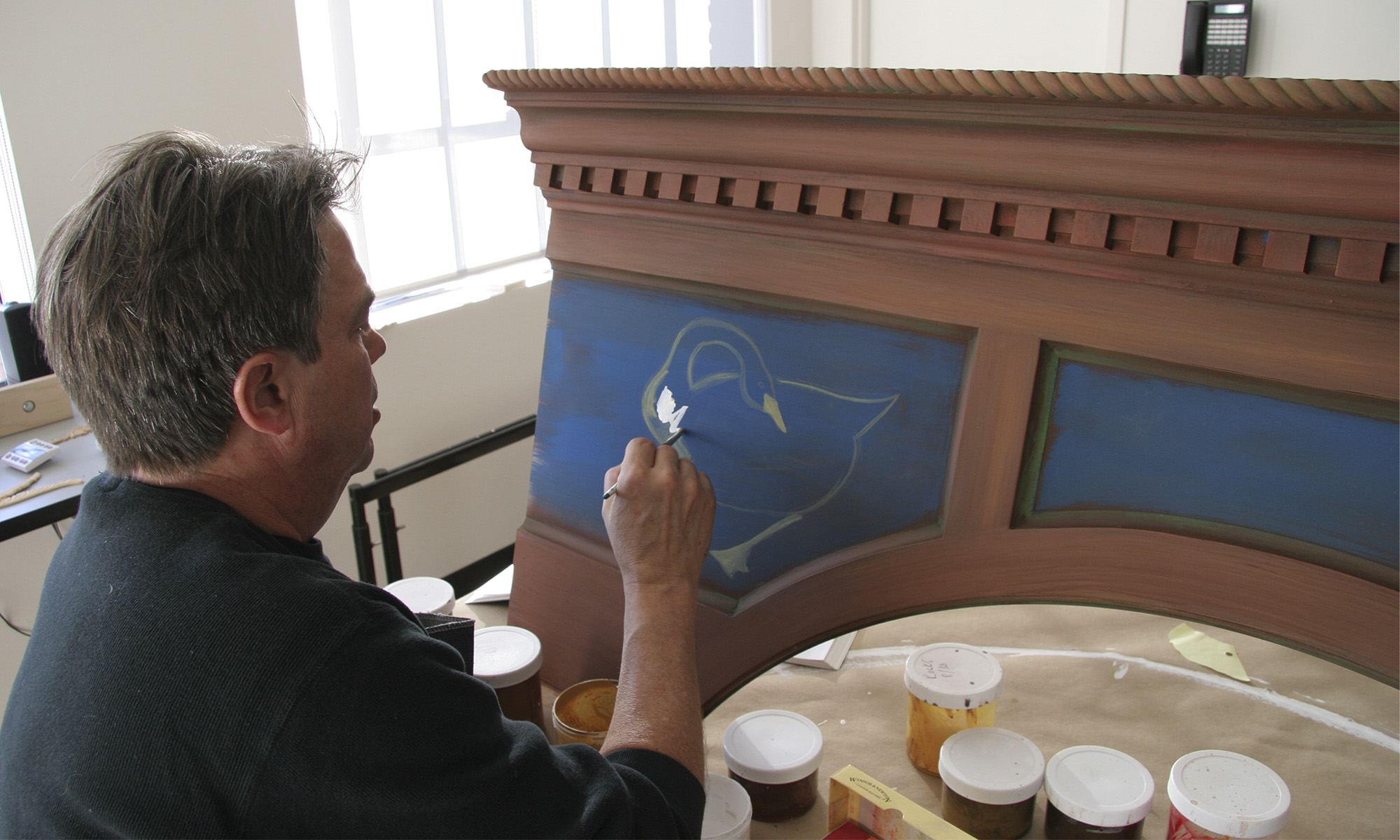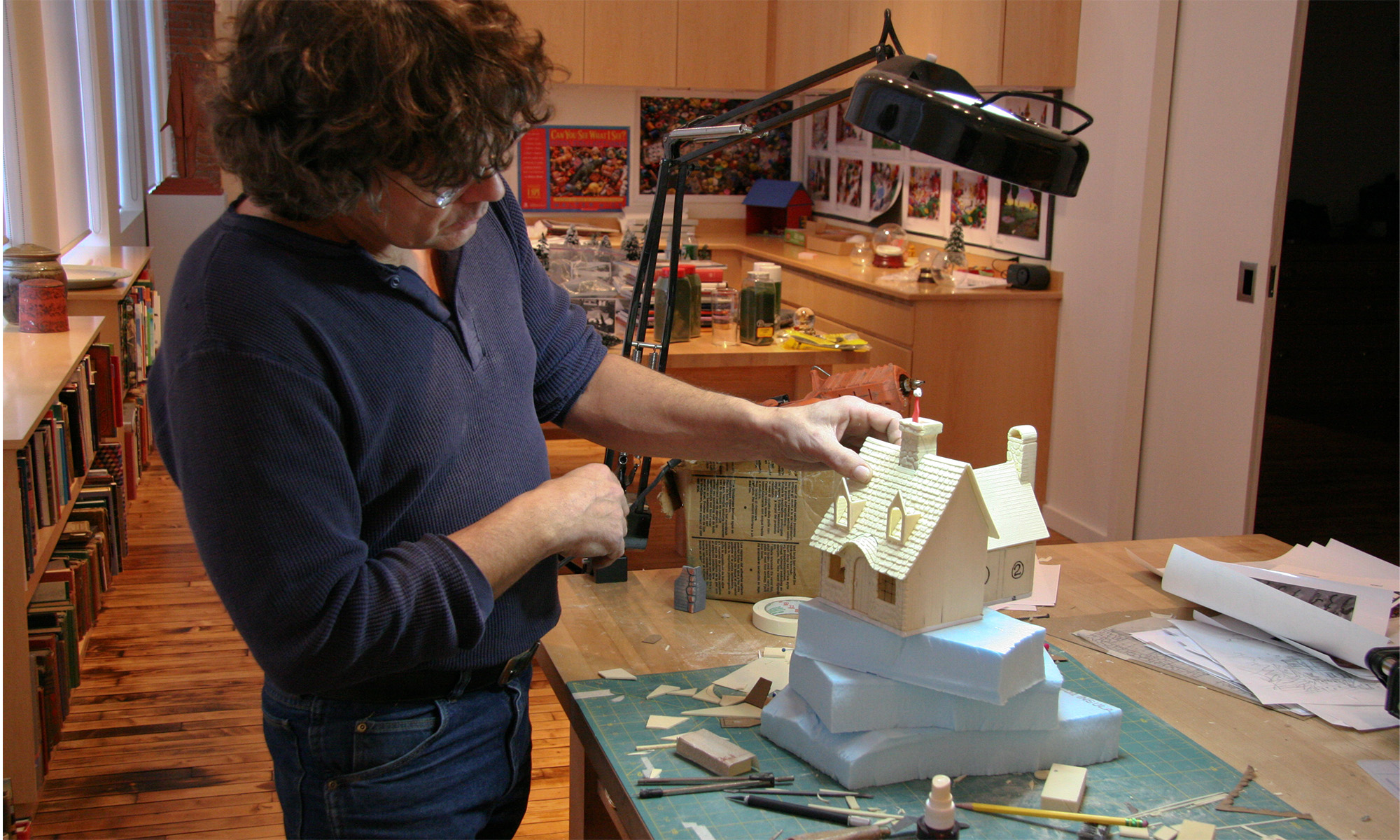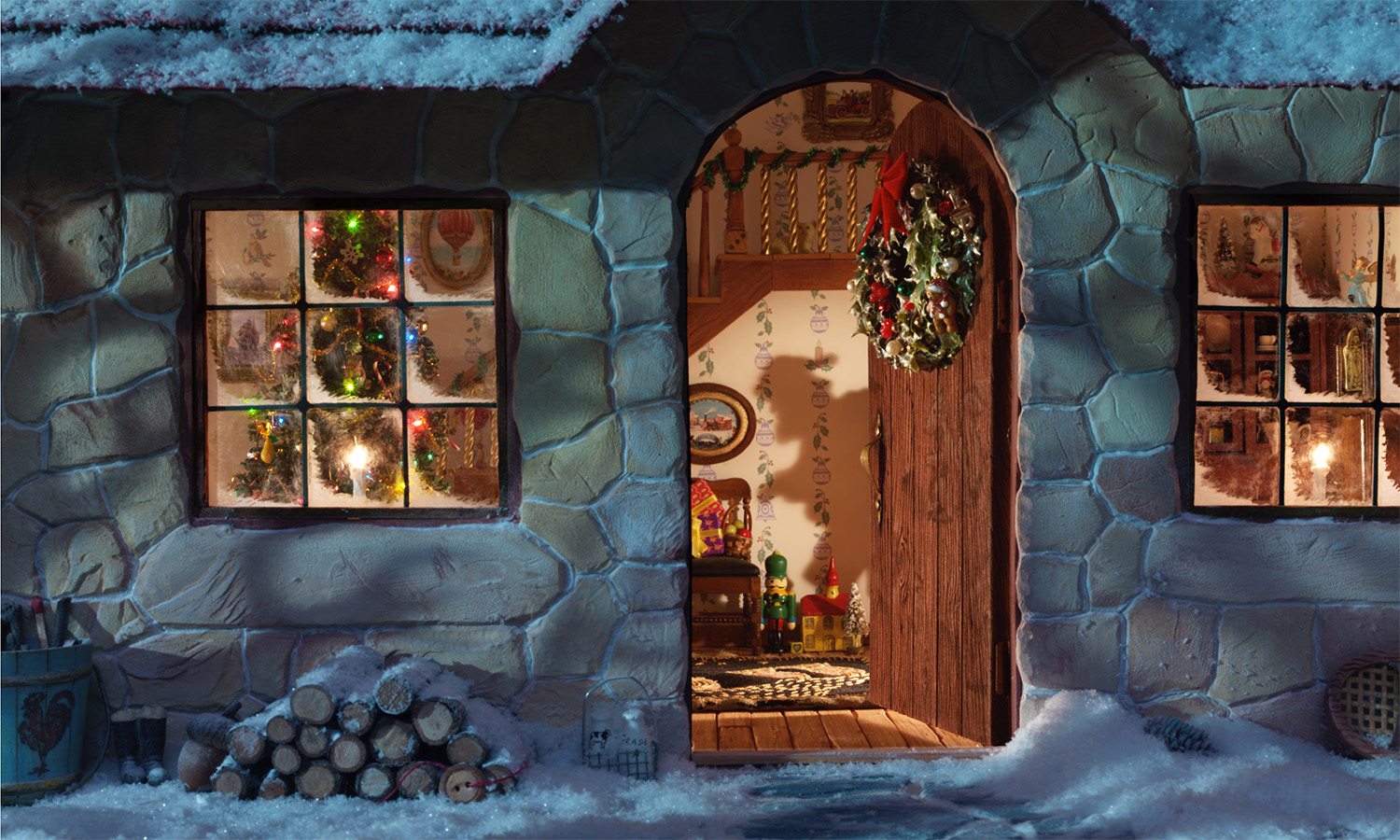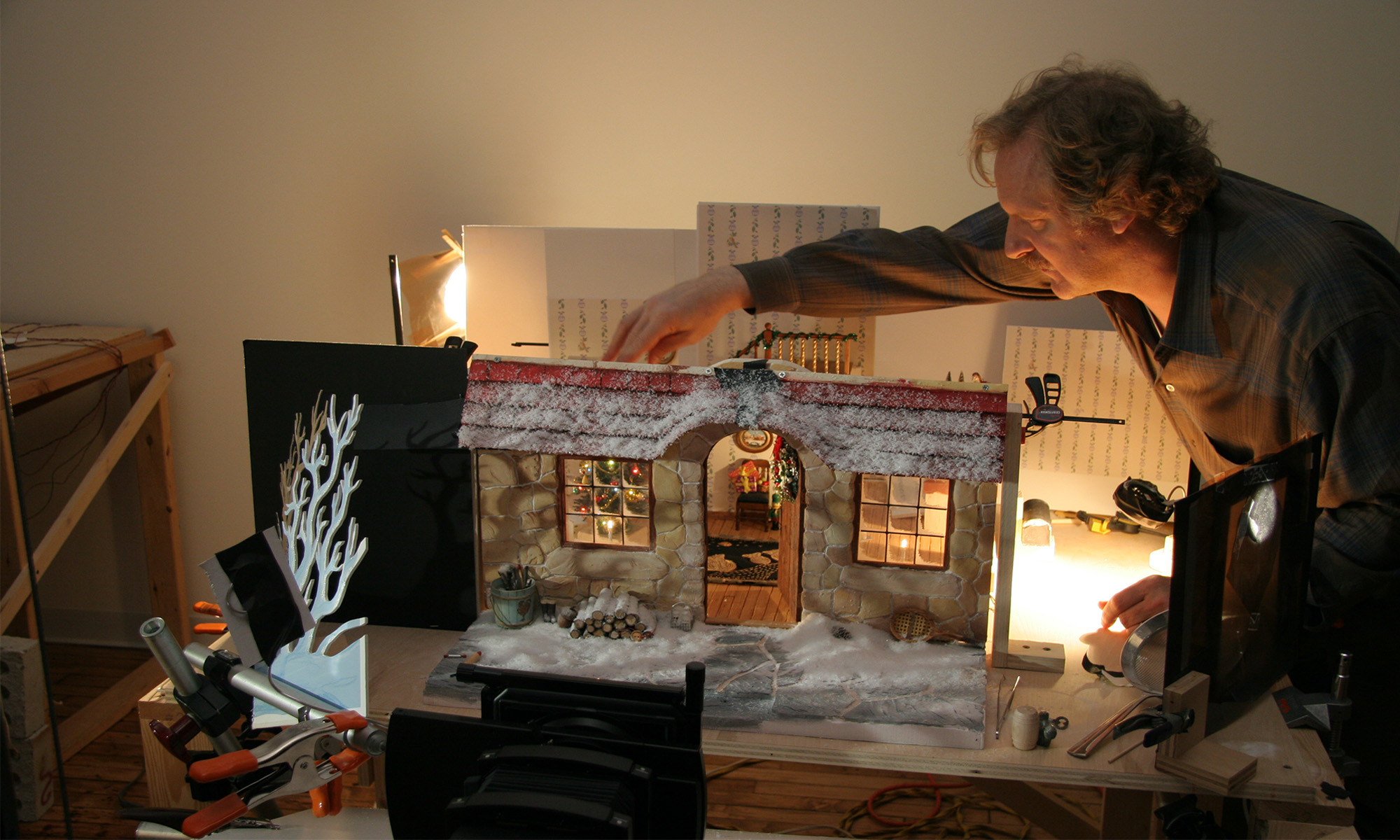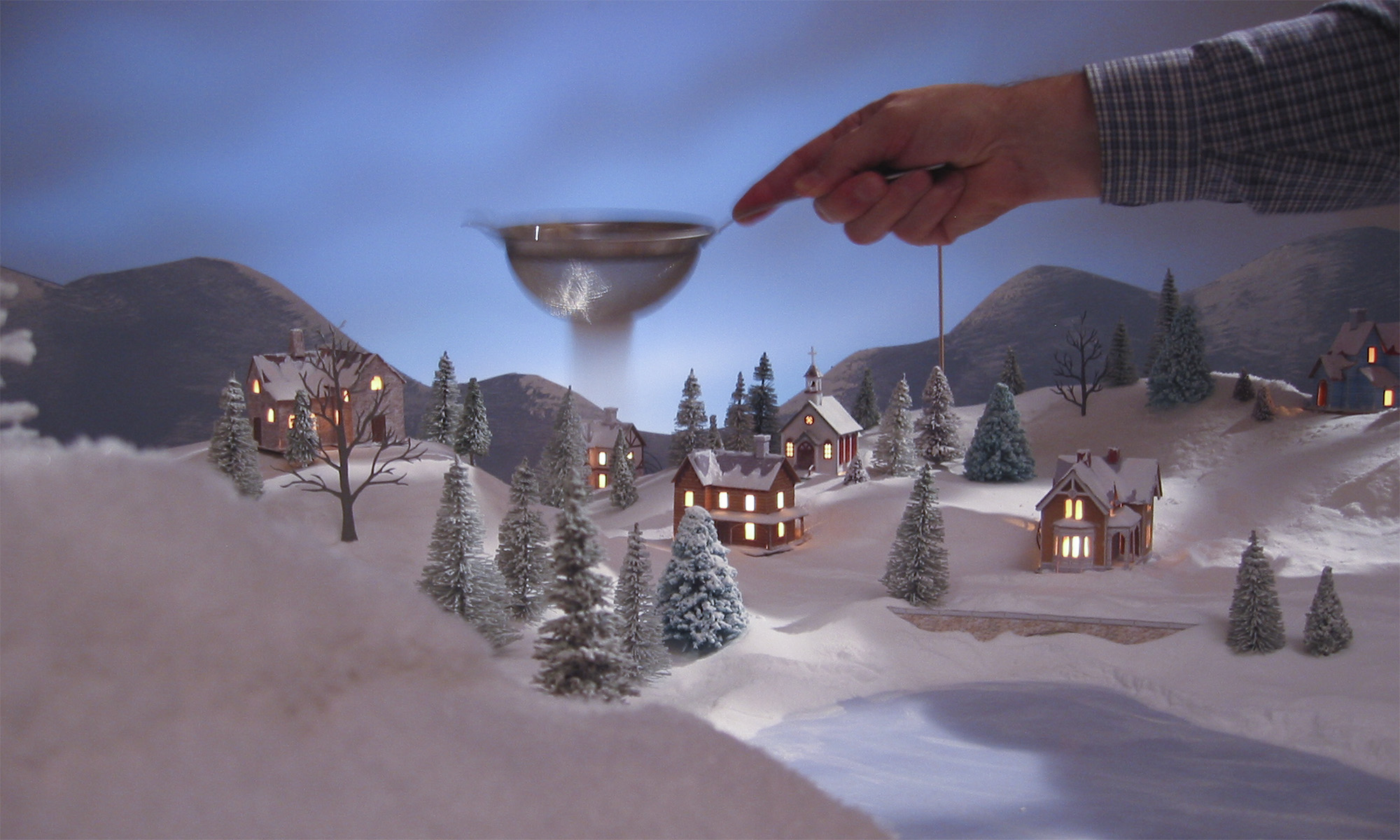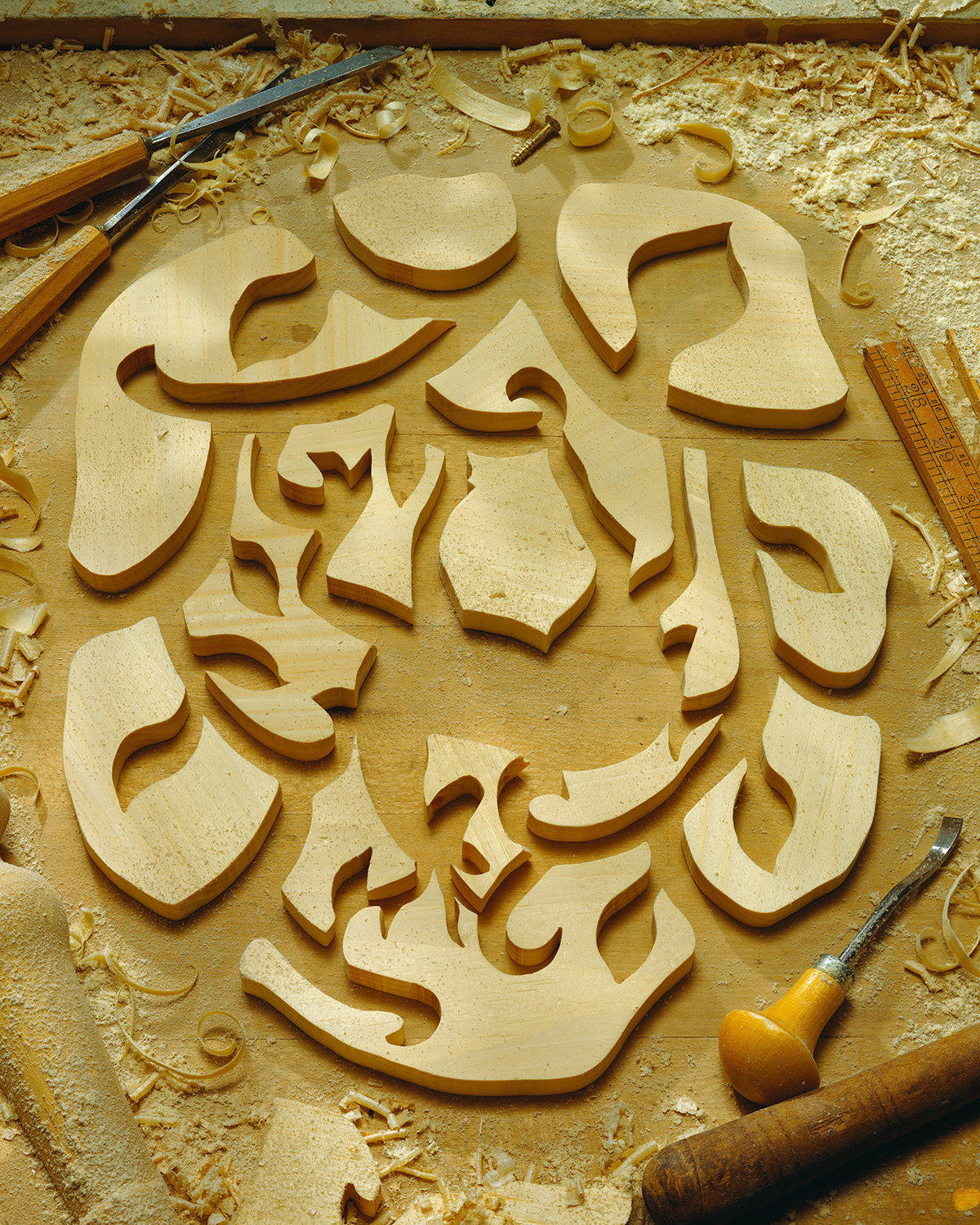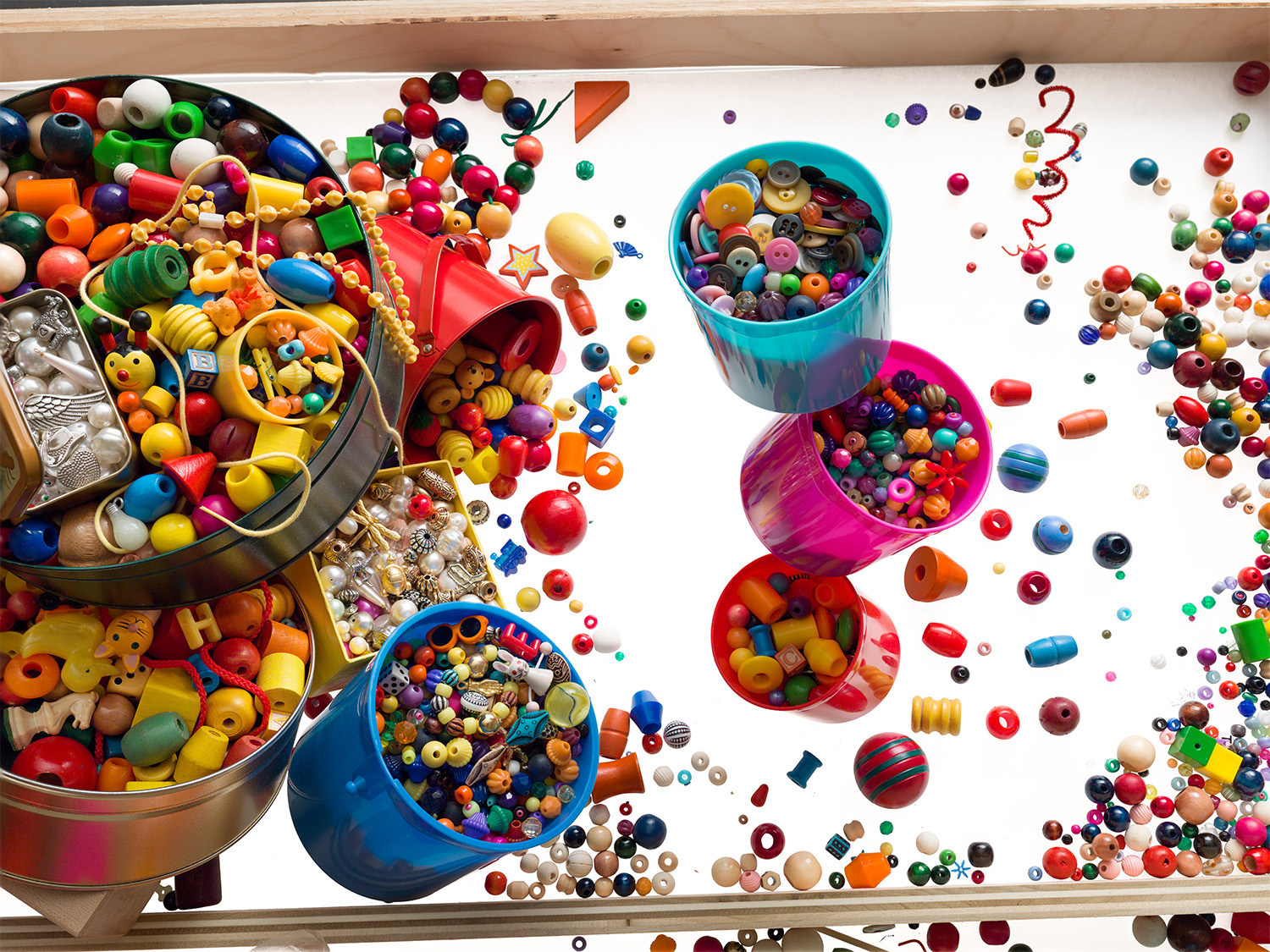My mother had a big influence on me. Not on the specifics regarding the making of art, but for her way of encouraging my interests in it. Having no members of our immediately family professionally involved in the arts, she had no specific advice on how to proceed. She just had a way of quietly removing any stumbling blocks; of letting me know, with out much fuss, that my path was clear.
This picture was taken during my first year of art school. Though the scene sums up my mom perfectly, she was patiently posing for me, not caught unaware. I was just learning how to use a large format camera, a slow and cumbersome tripod-mounted "plate camera" requiring a dark cloth to cover the operator so the scene could be previewed on the frosted glass camera back. The preview image of this type of camera is upside down and hard to see. And I was jammed up into the corner of the kitchen because the only lens I had was not very wide, so I missed the focus, which should have been on my mom's profile rather than the cup rack on the wall. I considered it a success nonetheless. Little did I know I would be using a very similar camera to shoot the I Spy books 20 years later.
Betty Wick, January 31, 2016
Here is my mom, in the same kitchen, at the same table, on her 99th birthday. I hadn't planned to remake the portrait. We had celebrated her birthday the previous day with all my siblings, and I was hanging around the house the next day when I noticed the light coming in the kitchen at nearly the same angle as it did in 1972. So I asked her to pose once again, though this time I used a hand-held digital camera. I didn't have the original as a reference, so it was only later that I realized things had somewhat rearranged in the 44 years since.
I've told my mom many times how much her encouragement meant to me. She always laughs and denies she had influence on me at all. But she did, and it was everlasting.
Happy mother's day, mom!













